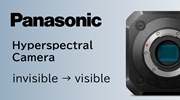Scope
WELCOME TO ISOM’25
| WELCOME STATEMENT FROM THE ORGANIZING COMMITTEE CHAIRPERSON |  |
|---|
The 35rd ISOM (ISOM’25) will be held from Oct. 19 to Oct. 22, 2025 at LIGHT CUBE UTSUNOMIYA in Tochigi, Japan.
On behalf of the ISOM organizing committee, I am delighted to welcome all of you to the ISOM’25.
The previous symposium, held in Himeji, Hyogo, Japan, brought together 120 participants from Asia and Europe. A total of 89 papers were presented, including 15 invited talks and special lectures. Attendees enjoyed engaging in face-to-face discussions, exchanging ideas, and strengthening relationships through both technical sessions and social activities.
We believe that ISOM’s activities have been highly fruitful, yielding significant achievements. Since the first ISOM in 1987, numerous papers have been presented and discussed in depth at the symposium, leading to new developments and applications in the field of optical memory. These contributions have not only driven innovation in optical memory technology but have also supported the economic growth of industries related to optical memory.
In 2017, ISOM broadened its scope to include a wider range of optical fields and applications, and subsequently changed its name to the International Symposium on Imaging, Sensing, and Optical Memory. The renewed ISOM now encompasses image sensing, medical and bio-optics, nano-photonics, information systems, holographic technologies, as well as optical memory. We believe this expansion will foster technological innovation and create new applications across all areas represented at the symposium.
I sincerely encourage all participants of ISOM’25 to actively engage in discussions on next-generation optical memory technologies and their novel applications.

Takanori Nomura
ISOM’25 Organizing Committee, Chairperson
INTRODUCTION
The 35th ISOM (ISOM’25) will be held from Oct. 19 to 22 at Utsunomiya.
The origin of ISOM is SOM (Symposium on Optical Memory), which was held firstly in 1985 in Tokyo as a Japanese domestic symposium. The first ISOM (International Symposium on Optical Memory) was held in 1987 also in Tokyo. Until 1994, ISOM and SOM were held alternately every other year, and since 1995, ISOM has been held every year. The total number of papers of the past symposiums has reached 3,912, and the total number of participants has reached 11,073.
The purpose of the symposium was to provide a forum for information exchange on a broad range of topics covering science and technology in optical memory and its related fields. However, information explosion in the internet and cloud service has been enforcing optical memory to change from that for consumer storage to that for enterprise storage. Many colleagues of us have been seeking for new frontiers of optical memory technologies. Considering this situation, the scopes of ISOM are continuously updated and have been reorganized in 2016. To further highlight them, the official name of ISOM was changed from “International Symposium on Optical Memory” to “International Symposium on Imaging, Sensing, and Optical Memory” in 2017. Presentations related to the new scopes as well as the conventional ones would be strongly encouraged.
In ISOM’25, along this direction, it will be very much expected to discuss the current status of optical memory, imaging, sensing, and other related technologies. In recent years, there has been a significant increase in presentations on topics other than optical memory, and lots of papers have been submitted in this ISOM.
As the COVID-19 pandemic has calmed down, we are now able to hold face-to-face events. Therefore, this ISOM will be held as a face-to-face event, in principle, with the exception of some invited speakers. We appreciate your participation as presenters and audience, and we are looking forward to seeing you in Utusnomiya.
SCOPE OF THE SYMPOSIUM
ISOM’25 will provide opportunities to discuss the current status of Optical Memory, Imaging, Sensing, and Other Related Technologies.
The scope of ISOM’25 includes the above research fields and provides a platform to exchange the latest advances and ideas, as well as to encourage scientific interaction and collaboration.
Topics to be covered in this symposium include, but are not limited to:
- Optical Memory
- Holographic Memory
- Optical Disk
- Media and Material Science
- Archival Memory
- Photonic Circuit Storage
- Others
- Imaging
- Digital Holography
- Computational Imaging
- Display
- Medical and Biological Imaging
- Scattering and Fluctuation Imaging
- Adaptive Optics
- Others
- Sensing
- LiDAR
- Three-dimensional Sensing
- Human-centered Sensing
- Environmental and Infrastructure Sensing
- Quantum Sensing
- Others
- Other Related Technologies
- Materials, Components, and Devices
- Nanophotonics, Metamaterials, and Plasmonics
- Optical Neural Networks
- Optical Information and System Design
- System Integration and Miniaturization
- Others
